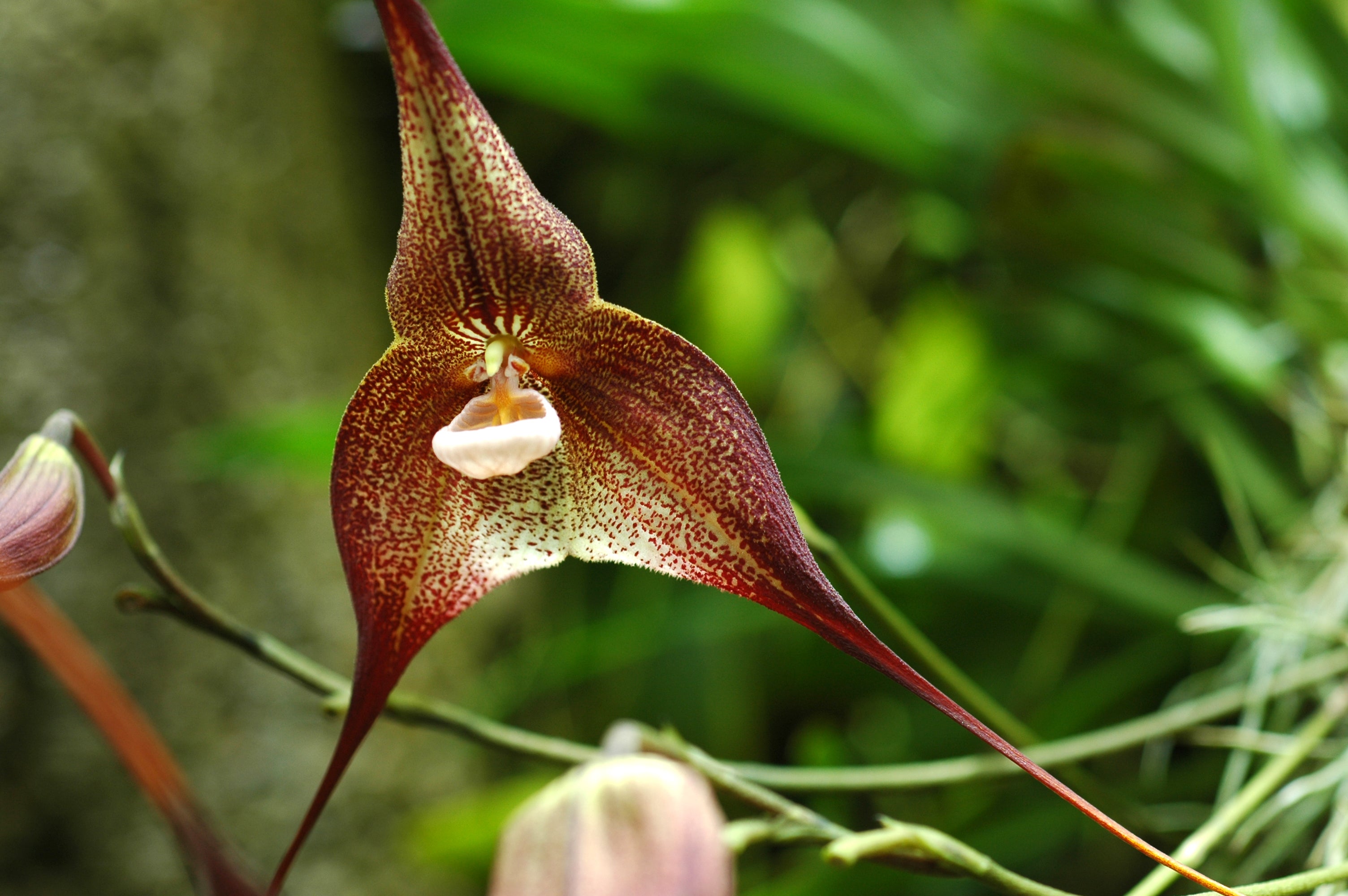They look like tiny monkeys peering out from the mist. Known to scientists as Dracula, the so-called “monkey-face orchids” have become online celebrities.
Millions of people have shared their photos, marvelling at flowers that seem to smile, frown or even grimace. But behind that viral charm lies a very different reality: most of these species are teetering on the edge of extinction.
A new global assessment has, for the first time, revealed the conservation status of all known Dracula orchids. The findings are dire. Out of 133 species assessed, nearly seven in ten are threatened with extinction.
Many exist only in tiny fragments of forest, some in just one or two known locations. A few are known only from plants growing in cultivation. Their wild populations may already be gone.
These orchids grow mainly in the Andean cloud forests of Colombia and Ecuador, some of the most biologically rich but also most endangered ecosystems on the planet. Their survival depends on cool, humid conditions at mid to high altitudes, where constant mist wraps the trees.

Unfortunately, those same slopes are being rapidly cleared for cattle pasture, crops like avocado, and expanding roads and mining projects, activities that are directly threatening several Dracula species (such as Dracula terborchii. As forests shrink and fragment, the orchids lose the microclimates (the specific temperature, light and humidity conditions) that they depend on for survival.
Another threat comes from people’s fascination with these rare and charismatic plants. Orchids have been prized for their flowers for hundreds of years, with European trade starting in the 19th century, when “orchid fever” captivated wealthy collectors, leading to huge increases in wild collection in tropical areas.
Today, that fascination continues, fuelled by the internet. Many enthusiasts and professional growers trade in cultivated plants responsibly, but others still seek wild orchids, and Dracula species are no exception. For a plant that may exist in populations of just a few dozen individuals, a single collecting trip can be disastrous.
Turning popularity into protection
In Ecuador’s north-western Andes, a place named Reserva Drácula protects one of the world’s richest concentrations of these orchids. The reserve is home to at least ten Dracula species, five of them found nowhere else on Earth.
But the threats are closing in. Deforestation for agriculture, illegal mining and even the presence of armed groups now endanger the reserve’s staff and surrounding communities.
Local conservationists at Fundación EcoMinga, who manage the area, have described the situation as “urgent”. Their proposals include strengthening community-based monitoring, supporting sustainable farming and developing eco-tourism to provide income from protecting, rather than clearing, the forest.
When you see these flowers up close, it’s easy to understand why they attract such fascination. Their name, Dracula, comes not from vampires but from the Latin for “little dragon”, a nod to their long, fang-like sepals, the petal-like structures that protect the developing orchid flower.
About the authors
Diogo Veríssimo is a Research Fellow in Conservation Marketing at the University of Oxford.
Amy Hinsley is a Senior Research Fellow in the Oxford Martin Programme on the Wildlife Trade at the University of Oxford.
Luis Baquero is a Researcher in Orchid Ecology at Universidad de las Américas (Ecuador).
This article is republished from The Conversation under a Creative Commons license. Read the original article.
Their strange shapes astonished 19th-century botanists, who thought they might be a hoax. Later, as more species were discovered, people began to notice that many resembled tiny primates, hence the nickname “monkey-face orchids”. They’ve been called the pandas of the orchid world: charismatic, instantly recognisable, but also deeply endangered.
That charisma, however, hasn’t yet translated into protection. Until recently, only a handful of Dracula species had had their conservation status formally assessed, leaving most of the group’s fate a mystery.
The new assessment was led by a team of botanists from Colombia and Ecuador, with collaborators from several international organisations including the University of Oxford and the International Union for Conservation of Nature (IUCN) Species Survival Commisso’s Orchid Specialist Group, finally closes that gap.
It draws on herbarium records (dried plant specimens collected by botanists), field data and local expertise to map where each species occurs and estimate how much forest remains. The results confirm what many orchid specialists had long suspected: Dracula species are in serious trouble.
Despite this grim outlook, there are reasons for hope. The Reserva Drácula and other protected areas are vital refuges, offering safe havens not only for orchids but for frogs, monkeys and countless other species.
Local organisations are working with communities to promote sustainable agriculture, develop ecotourism and reward conservation through payments for ecosystem services. These are modest efforts compared with the scale of the challenge, but they show that solutions exist, if the world pays attention.
There’s also an opportunity here to turn popularity into protection. The same internet fame that fuels demand for these orchids could help fund their conservation. If viral posts about “smiling flowers” included information about where they come from and how threatened they are, they could help change norms about the need to avoid overcollection.
Just as the panda became a symbol for wildlife conservation, monkey-face orchids could become icons for plant conservation, a reminder that biodiversity isn’t only about animals. Whether future generations will still find these faces in the forest, and not just in digital feeds, depends on how we act now.

.jpeg)























.jpeg)














 English (US) ·
English (US) ·